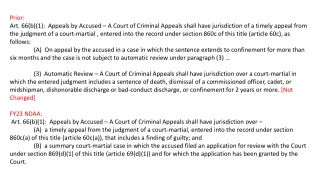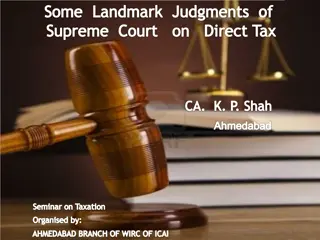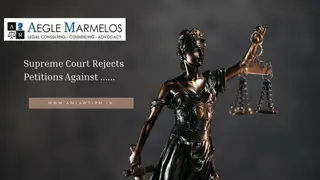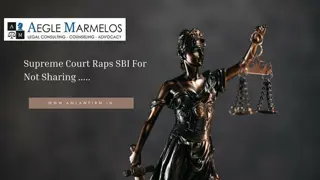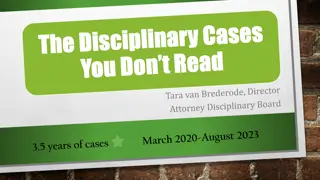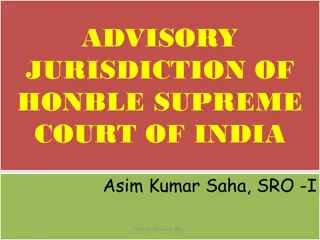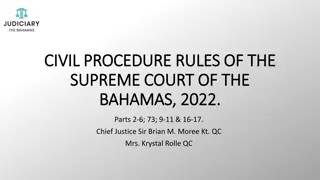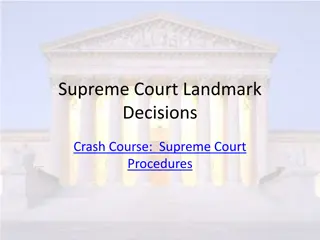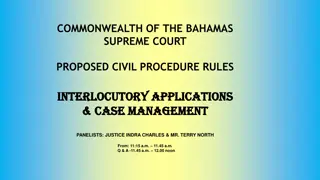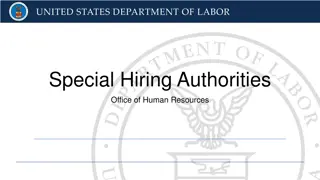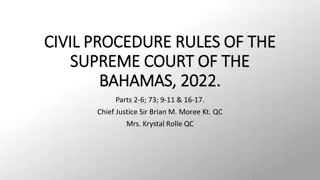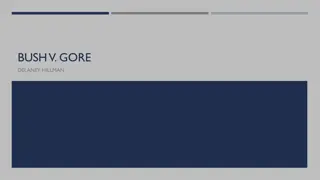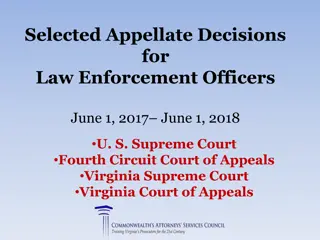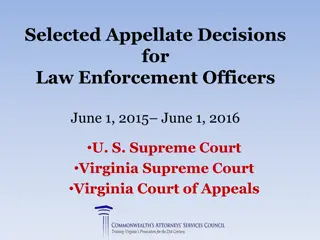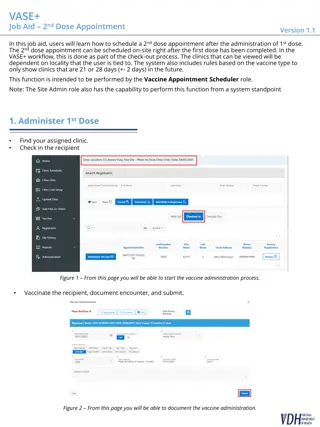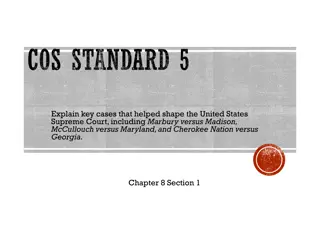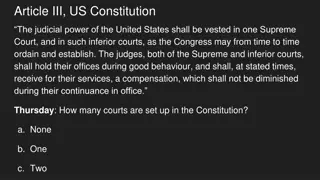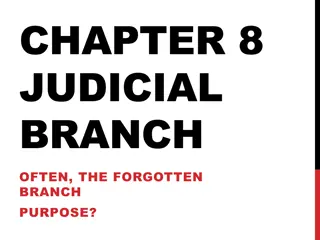
Supreme Court Appointment Process Explained: Key Stages & Significance
Dive into the intricate process of appointing Supreme Court Justices, from vacancy occurrence to nomination, background checks, and confirmation hearings. Discover the political importance and why Presidents prioritize this process. Get insights on the key steps and factors influencing Justice appointments.
Download Presentation

Please find below an Image/Link to download the presentation.
The content on the website is provided AS IS for your information and personal use only. It may not be sold, licensed, or shared on other websites without obtaining consent from the author. If you encounter any issues during the download, it is possible that the publisher has removed the file from their server.
You are allowed to download the files provided on this website for personal or commercial use, subject to the condition that they are used lawfully. All files are the property of their respective owners.
The content on the website is provided AS IS for your information and personal use only. It may not be sold, licensed, or shared on other websites without obtaining consent from the author.
E N D
Presentation Transcript
Appointment to the Supreme Court Appointment to the Supreme Court A Level Government & Politics Students should be able to: Identify the key parts of the appointments process Explore the political significance of the process Evaluate why President s place a high importance on the process
Appointing Justices The system is a 4 step process Senate hearings and confirmation FBI Background Checks Search is Instigated Vacancy Occurs
1. Vacancy Occurs For a seat to be filled on the court, a vacancy must first exist. This can come about in a number of ways: 1. Death of a Justice E.g. Antonin Scalia who died in February 2016 2. Retirement E.g. Sandra Day O Connor who retired in 2006 3. Impeachment E.g. Samuel Chase in 1805, although he was acquitted It is then up to the President to start a search for a replacement
2. The Search is On The President instructs the Executive Office to start the search. There are several places they can take advice from and look for a nominee Advice Nominees Congress Professional Bodies such as the American Bar Association Congress Members of the Cabinet Lower Courts Executive Branch Legislative Branch Academia
3. Background Checks All nominees are checked by the FBI is they are going to a Supreme Court Justice. It is to make sure they are right and that there are no skeletons in closets. In addition to the FBI background check, they also have a interview with the President. Presidential choice is an important factor in the selection of a Supreme Court justice, as President s seek to leave a legacy The American Bar Association will also give a nominee a rating. Clarence Thomas was the last President to receive a lower than perfect rating.
4. Confirmation Hearings Senate Judiciary Committee Hearings Vote on the Senate Floor Nominee Announced WIN LOSE Nominee appointed as a Justice Nominee may withdraw if they lose the hearing vote Nominee is then subject to press scrutiny Process goes back to the start
Summary Advice sought from: Advisors Congress Professional Bodies Senate hearings and confirmation Nominees can come from: Lower Courts Executive Branch Legislative Branch Academia FBI Background Checks FBI Checks and interview with the President. ABA gives an informal rating Clarence Thomas is the last nominee to receive lower than perfect SJC holds hearings for the candidate Sometimes candidates withdraw if hearing is bad Search is Instigated Vacancy Occurs Vote on the floor. If committee rules against, Senate typically will Death, Retirement or Impeachment
Why is this important? Presidents get to serve 8 years at the most. Supreme Court justices get to serve for life. Many will outlive the Presidents who appointed them, not only politically but also in life. Presidents will therefore seek to appoint someone who is similar to them ideologically. For example Obama appointed liberal justices Kagan and Sotomayor Presidents seek to leave the Supreme Court as an echo chamber of administrations past.
Some Famous Appointments Earl Warren Robert Bork David Souter Appointed by Eisenhower who said it was the biggest god dam mistake of his life Reagan s controversial nomination, the subject of a negative ad campaign. Failed to confirm Appointed by George H W Bush he has turned out to be one of the most liberal members of the Court
Appointment to the Supreme Court Appointment to the Supreme Court A Level Government & Politics Students should be able to: Identify the key parts of the appointments process Explore the political significance of the process Evaluate why President s place a high importance on the process

